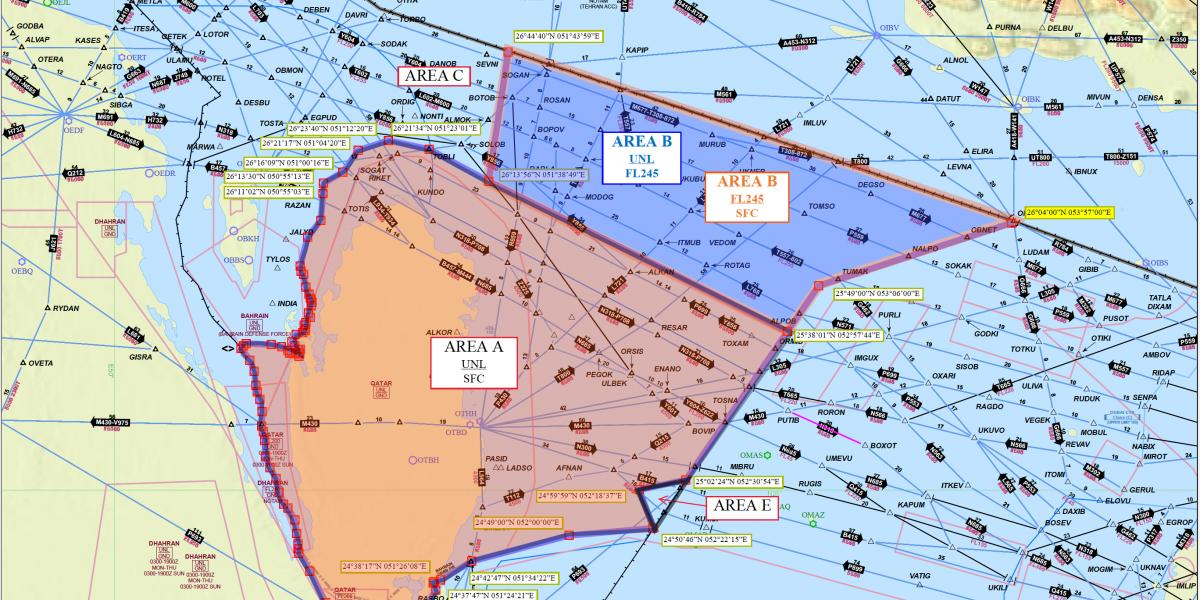Doha-Qatar
The Council of the International Civil Aviation Organization (ICAO) has approved the implementation of Phase Two by the State of Qatar for the management of the Doha Flight Information Region/Upper Information Region (FIR/UIR) and the Search and Res-cue Region (SRR) following the successful implementation of Phase One where Qatar fulfilled all safety and security requirements.
Phase Two, which covers the management of air traffic over international waters north of Qatar, is a critical step toward fully realizing the benefits of airspace modernization. The implementation of Phase Two applies to vertical limits extending from sea level to an unlimited altitude.
By standardizing altitude limits, Phase Two will enhance safety, protect the environ-ment, and improve operational efficiency, benefiting both national and regional inter-ests. This phase also brings numerous operational and environmental advantages, in-cluding reduced fuel consumption and emissions, increased capacity, and greater flexi-bility. In addition, it will strengthen safety, boost efficiency, improve regional and inter-national connectivity, and reinforce Doha’s strategic position as a key global aviation hub. Furthermore, it will enable more efficient operations for airlines.
“We, in the State of Qatar, are proud of the qualitative achievements we have achieved over the past few years, which contributed to reinforcing the country’s positioning on the map of global aviation industry and enhancing its effective role in that vital indus-try,” said Minister of Transport H.E. Sheikh Mohammed bin Abdulla bin Mohammed Al Thani.
“These achievements have been crowned recently with an ICAO Council’s approval to going ahead with implementing Phase Two of the Doha FIR in a significant step toward improving the management of air traffic over international waters north of Qatar and providing more efficient and resilient operations.”
“This approval is the culmination of the success over the past two years since the im-plementation of Phase One began and the State of Qatar has proven its deservedness and compliance with highest safety and efficiency standards, something which strengthened the international community’s belief in our technical and operational ca-pabilities.”
As Phase Two begins, he said, “we will progress on our ambitious course to create a modern civil aviation system consistent with our national vision and in step with best and highest universal practices in the industry.”
Mr. Mohamed Faleh Alhajri, in charge of managing the Qatar Civil Aviation Authority said that the ICAO Council’s decision adds up to the advanced steps and previous achievements by the State of Qatar since the approval to go ahead with implementing Phase One of Doha FIR, which was a milestone in the history of Qatari civil aviation.
In this regard, he added, Qatar has gone a long way in developing its air navigation sys-tems in line with latest global standards and specifications, something that reflects the excellence it has reached it terms of providing air services to the best efficiency levels, let alone its compliance with highest safety, security and sustainability standards.
The QCAA has over recent months implemented a range of operational practices and requirements to prepare for the activation of Phase Two. That included adopting safety procedures and committing to ICAO standards, ensuring a seamless transition to the next phase without compromising operational safety. Additionally, infrastructure and technologies have been upgraded, all systems and devices updated, and automation processes enhanced to better handle the ongoing growth in air traffic.
In terms of human resources and training, enough air traffic controllers, technicians, and specialists have been recruited and subjected to intensive training programs and field simulation exercises, in accordance with the requirements of Phase Two.

